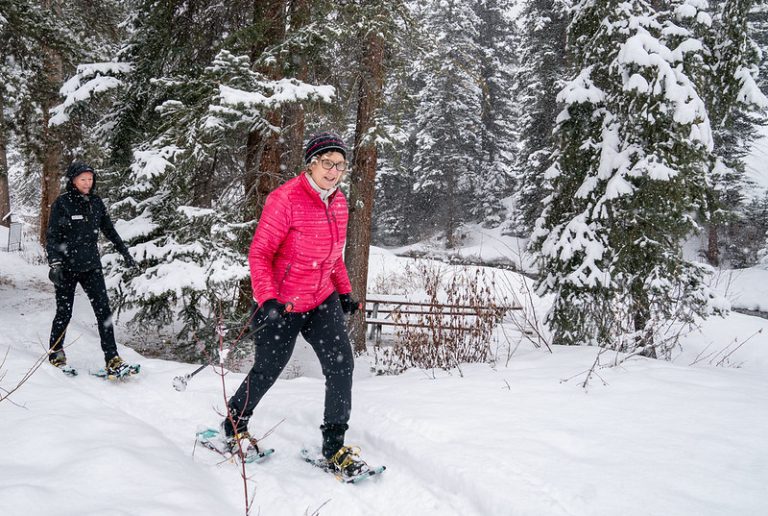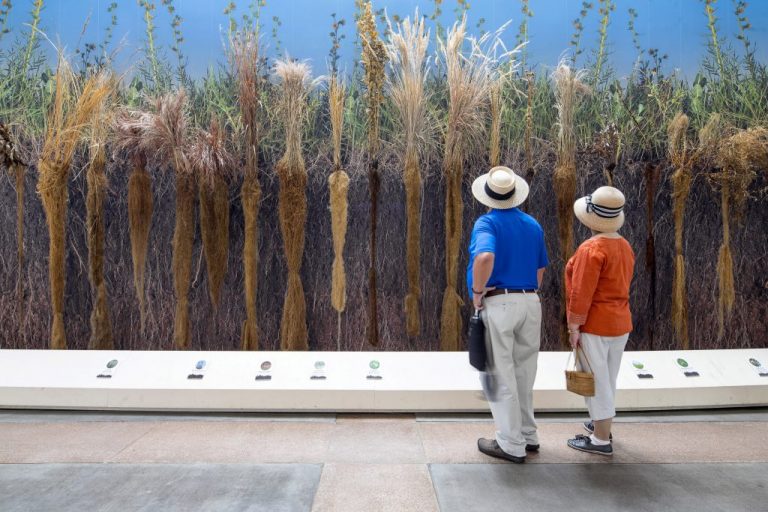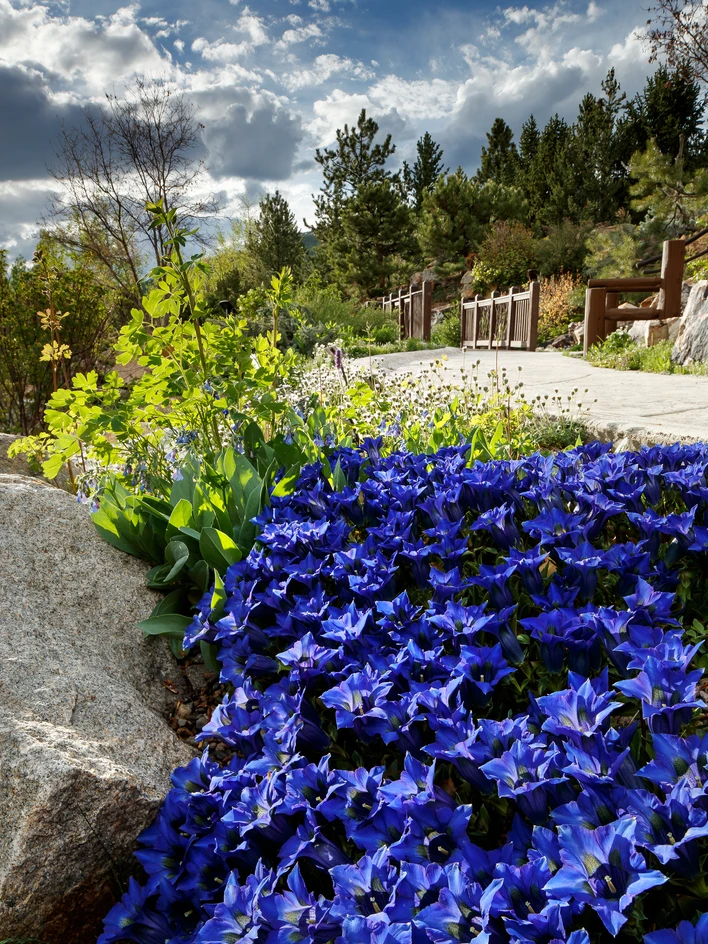It is nearly impossible to disentangle the human from the botanic at Betty Ford Alpine Gardens. On certain mornings, a walk through the Gardens proves this as self-evident. If you visit early enough on a Monday or Thursday, you might encounter a group of kindly individuals, kneeling on the dewy morning soil, hard at work. They might chat with you about their tasks at hand, or help you troubleshoot a drooping plant.
So too, for these garden volunteers at Betty Ford Alpine Gardens, it is difficult to separate their work at the Gardens—tending to the many plants who live there—from the community that comes together to do so.
I took such a walk through the Gardens last week. Armed with a bowl full of strawberries and watermelon, Volunteer Engagement Coordinator, Jerri Powels, sent me to talk with the Monday volunteers. “Bribe them,” she said, laughing.
The fruit bowl did little, it seemed, to distract the volunteers from their tasks. The work rivaled the quiet meditation I have seen at Buddhist retreats, quiet, careful, and serene as it was. The volunteers were weeding, and moving vegetation from ground to bucket. No one, at first, wanted to break the spell to talk to me.
All was well; I watched the reverie for a while. And it was: a labor of reverence for the Gardens. Feeling sorry for me, I think, Pat Anderson offered to talk to me first.
For Pat, it seemed, the pull of the Gardens was both about her work in them and the people who filled them. Pat has volunteered her gardening expertise at Betty Ford Alpine Gardens for four—or five—years. Having moved from a home with a garden into a condo, her love for gardening found its benefit at the Betty Ford Alpine Gardens. Still, for Pat, volunteering at the Gardens has reaped another unexpected reward: “I just love it. I make friends all the time.”
Indeed, for all of the volunteers I spoke with, volunteers seemed to hold, in equal measure, both a regard for the Gardens they tended and the people they were gardening alongside. Another volunteer reflected, “I just love working in the garden. I like early season gardening, when things are emerging. They’re very beautiful and tender.” So too, later in the summer, this volunteer enjoys seeing the fruits, so to speak, of her labor: “when I come back through the gardens when I’m not working—by myself or with guests—I feel very proud of what I’ve done here.”
Joyce Toth also reflected on the beauty in growing small things; she likes to grow plants from seeds, in order to show others “what can be done from very little in the garden.” Of course, the joy of watching a garden grow anew is an oft-cited motivator for gardeners. The special thing about Betty Ford Alpine Gardens is the community—of plants and people—that come together to make and watch this happen.
Curator of Plant Collections, Colin Lee, has insisted that the work of the team of volunteers is integral to the beauty and vitality of the Gardens. In his eight years of working at Betty Ford Alpine Gardens, he has found stewarding the Gardens to be “a task that could not and would not get done without the support of our volunteers. The maintenance and upkeep of the gardens—and the extraordinary extent to which we do it—is made possible by the efforts of the volunteers.”
Much can be done, as Joyce remarked, with seeds in a garden. Much can be done too with a group of happy-to-be-here volunteers, an array of gardening tools, and a bowl of chilled fruit. The result of this alchemy is a Garden, a Community. As Pat told me, smiling, “people come through and thank us all the time” she reflected. “You really feel like a part of a community when you’re out here.”
Joyce agreed with Pat. She thinks that there is something special about the gardeners who have generously given their time to Betty Ford Alpine Gardens: “having done a lot of volunteer activities, I find we are a certain group of people that try to make a difference in whatever we do. That’s why I have things in common with these people. We’re doers.”





